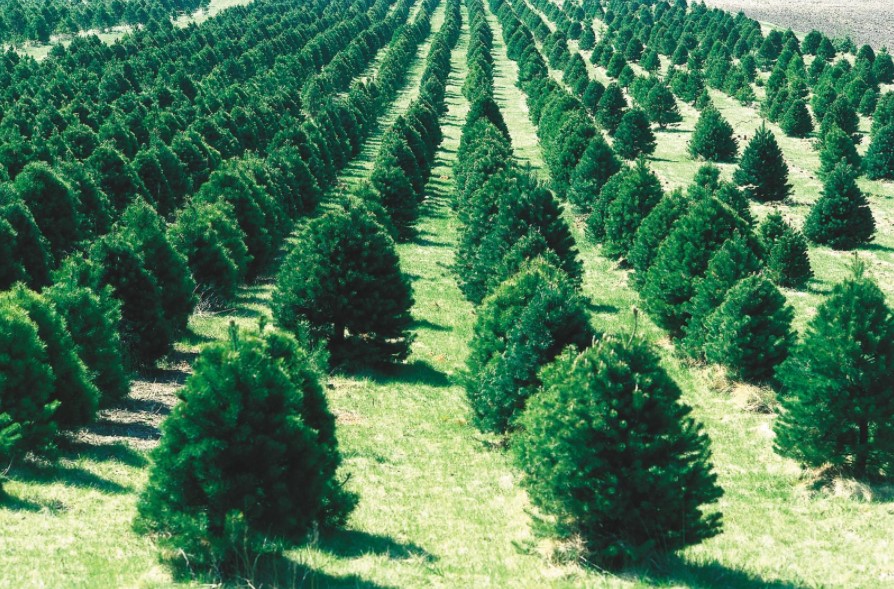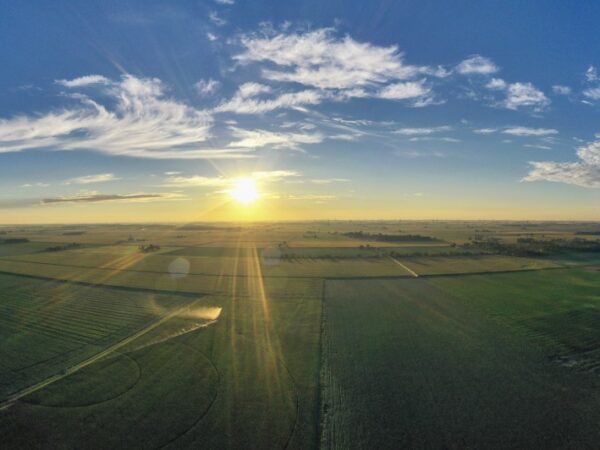
Earlier this month, Michigan Gov. Gretchen Whitmer declared December 2021 as “Christmas Tree Month” in Michigan.
It’s a move that makes sense — the Christmas tree industry provides jobs and bolsters the national and state economy.
“Michigan’s integrated network of family farmers, processors, wholesalers and retailers, work together to ensure a quality product that is enjoyed by millions throughout our state and country,” Whitmer said in a statement.
Around 30 million Christmas trees are sold in the U.S. each year. Michigan harvests approximately 2 million trees each year, making it third in the nation for Christmas tree farming. They also grow and sell more varieties of Christmas trees than any other state in the U.S.
“Taking your kids to a farm or putting up your Christmas tree — that’s not only a tradition, but it’s making memories and just a wonderful experience,” said Michigan Christmas Tree Association Executive Director Amy Start. “So I think that between all that and then on top of it, you know, for the growers, it’s their business, and it adds to Michigan’s economy.”
Between the state’s 560 growers, the Michigan Christmas tree industry brings a net value of $30 to $40 million to the national market each year.
Wisconsin ranks just behind Michigan, with $23.3 million in Christmas tree sales in 2019, according to data from the U.S. Department of Agriculture’s National Agricultural Statistics Service. It’s a huge jump from the $16.1 million in sales from 2014. This increasing demand has even resulted in shortages in both the U.S. and Canada.
With that sort of economical impact, it begs the question: how does this agricultural commodity impact the environment?
Let it drip, let it drip, let it drip
Over 37,000 acres of land in Michigan is used to grow Christmas trees. According to Bert Cregg, a professor of horticulture and forestry at Michigan State University, the water usage on Christmas tree farms varies between farms and seasons.
“We’ve got everything from people that have a few acres of trees or maybe not even an acre of trees in their backyard all the way up to a major grower in northern Michigan that might harvest several hundred-thousand trees every year,” he said.
Cregg conducts research on Christmas tree systems and works with the Michigan Christmas Tree Association to educate growers on sustainable growing practices. Growers can attend workshops on topics like irrigation and pesticides to get accreditation from the Michigan Department of Agriculture and Rural Development.
“(MDARD) comes to your farm and they look at your pesticide storage, and they give you a set of guidelines and suggestions so you do not have any contamination and groundwater contamination,” said David Francis, co-owner of Montague Tree Farms in Montague, Michigan.
To water their trees, growers use different irrigation systems. Some don’t irrigate at all, making their water usage relatively small. Some use overhead irrigation systems, while some use drip irrigation or other systems.
“We went to drip irrigation and that has helped immensely. We easily have over 95% survival now because we run drip,” said Francis.
Drip irrigation is more efficient than overhead irrigation, according to Cregg, and more expensive to install.
“It just dribbles out water, so the water is right there at the base of the tree where the tree’s roots are and you’re not fertilizing all that space in between the rows,” he said. “So it’s the most efficient, you’re not losing water to evaporation.”
A farm’s water usage also depends on the species and age of the trees. For example, an older tree will likely need less water than a younger tree and a Fraser fir will likely need more water than a pine or a spruce.
Fraser firs accounted for 27.6% of all Christmas trees grown in Michigan, with the next most common being Douglas fir at 16.4%, according to a USDA National Agricultural Statistics Service 2014 report.
“Fraser fir is actually native to higher elevation areas in North Carolina, so up in the mountains, where they actually have a good bit of rainfall, a lot of cloudy conditions and a lot of foggy conditions,” said Cregg. “It’s a species that’s adapted to need more water than some of the other trees we grow.”
The water usage of Christmas tree farms may change in the future, as our climate warms. On Montague Tree Farm, Francis said they’ve needed to use more water in recent years due to longer periods between rainfalls.
“What I’ve noticed is the intervals between rainfall seem to increase, so we have to run our drip irrigation longer and more frequently,” he said. “During these times we have to irrigate almost 24/7 just to keep everything growing properly.”
Santa’s carbon footprint
A Christmas tree takes anywhere from six to 10 years to reach marketable height.
After that, pre-cut trees are cut and transported to where they’ll be sold. The tree is disposed of after the holiday season.
A 6-foot tree, if incinerated, releases 8 pounds of carbon dioxide. This goes up to 35 pounds if the tree is left in a landfill, according to the Carbon Trust. To reduce this waste, trees can also be recycled into mulch for landscaping.
An artificial tree of the same size is responsible for 88 pounds of carbon dioxide, according to the UK-based Carbon Trust.
At Montague Tree Farm, they use solar power to power their farm. The solar panels were provided by Consumers Energy, through a program called the Experimental Advanced Renewable Energy Program.
The program ended in 2016, the same year that Montague received the solar panels. Solar power has saved the farm energy and money, according to Francis.
“I think our electric use has actually gone up because we’ve been having to irrigate more and other things,” he said. “We’ve got a bunch of battery-powered equipment on the farm now so electric use has gone up, but generally, it pays us between $1,200 and $1,500 over what we use.”
Overall, Cregg said, the environmental footprint of Christmas tree farming is relatively efficient compared to other forms of agriculture.
“Trees, conifers in particular, their resource needs are pretty small. That’s part of why they’re evergreen,” he said. “They have relatively low nitrogen needs compared to corn.”
Christmas trees can grow in rocky, difficult soil, providing woody areas for animals and creating oxygen.
Then there’s the emotional impact of the trees.
“99.9% of the people coming here to buy a Christmas tree are in a great mood,” said Francis. “It gives them a reason to get outside and be together.”
Catch more news on Great Lakes Now:
Great Grapes: Soil and climate have made the Great Lakes a top wine-producing area
Community Sucker Science: Meet a Shedd Aquarium fish researcher and her stewardship volunteers
Featured image: Christmas tree farm in Iowa (Photo Credit: United States Department of Agriculture)




